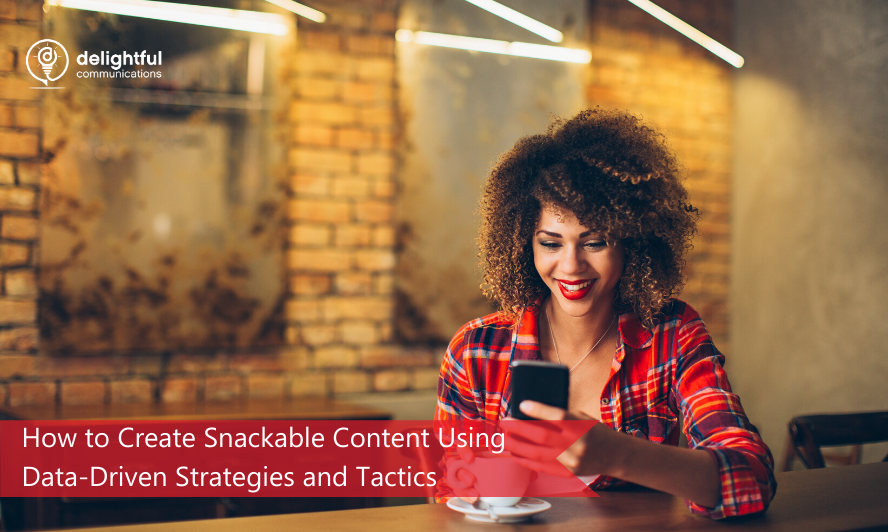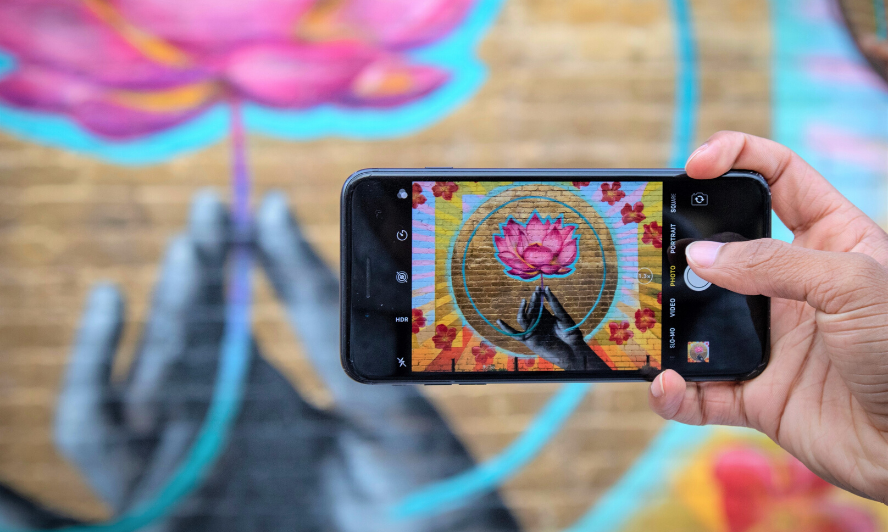49% of people will stop reading your message after 111 words – Associated Press
Our attention spans are decreasing as our access to technology and digital information grows. This is why Kristin Graham, principal of culture and communications at Amazon, tells us we must reevaluate how we prepare and package content.
We had the pleasure of attending Graham’s keynote speech “Embrace Your Inner Nerd: Using Data as a Communications Superpower” at Ragan’s Employee Communications, PR & Social Media Conference at Microsoft. We can use data, she said, to find the best way to fight through the digital noise. To capture the fleeting focus of our audiences, we must create attention-grabbing, snackable content.
That was 111 words
There is no denying that our use of technology and digital tools is growing. Graham showed Erik Qualman’s Digital Transformation Video 2019, to highlight the shifts our global society is going through:
- Over 50% of the world population is under 30 years old
- 1 in 3 would rather give up sex than their phone
- 2 in 3 people get their news from social media
- Social media influences 93% of buying decisions
- Every second, 2 people join LinkedIn – That’s like the entire enrollment of the Ivy League joining LinkedIn every day
“We don’t have a choice on whether we digitally transform. The choice is how well we do it.” – Erik Qualman
Our constant connectivity to technology is growing. Graham points to a study by Daily Mail which found that employees are connected to technology for work, on average, 12 hours a day. According to a 2016 UC Irvine study, she said, people check their email about 74 times a day. Our use isn’t restricted to the daytime, either. 26% of adults wake up during the night and check their mobile device, she said, according to a 2019 Common Sense Media study.
While the quantity of digital messages we’re subjected to every day has increased, the quality of attention we give them has decreased. Our average attention span for digital tasks is only 40 seconds, Graham quotes from a UC Irvine study. While many of us may think we are great at multitasking, she said, that same study found that it takes about 23 minutes and 15 seconds to get back to quality input after an unrelated interruption.
So how do we fight through the noise?
Make your content snackable
Make your messages short and to the point, preferably under 111 words. Use white space to section information and bullets to highlight the important takeaways, using formatting to make your content easy to skim for key points.
Graham also recommends you follow BLOT – Bottom Line on Top – to give your audience the key information first, instead of leading up to it. If your audience is interested, they will continue reading as you expand on your subject; but don’t make them work to discover the key point of your message.
Another way to increase retention is to limit the things you want your audience to remember. Cognitive Psychology Research on Short Term Memory has found, Graham said, that the sweet spot for information retention is between five and nine things – more than that and we have a hard time retaining the information.
Graham’s slide flashes “867-5309” and she asks the audience who they’ll get if they call the number. The audience laughs and shouts “Jenny!” – it’s one of the reasons why we remember phone numbers so easily (although, it doesn’t hurt to include a catchy tune to make absolutely sure it sticks in your brain).
Make your content visual
Making your content visual, Graham said, is one of the best ways to make your content appealing to your audience. One common thread we heard from several presenters across the conference was that our overall consumption of video is increasing rapidly. Qaulman states in his video that about 80% of our mobile consumption is video. This is a win, Graham said, for communicators who use visuals. After all, she states, 90% of the information transmitted to the brain is visual, where it is then processed 60,000 times faster. It’s also remembered by 80% of people who see it. When trying to get information to a distracted audience with shortened attention spans and an endless stream of content fighting for attention, a visual or video could make a big difference in engagement.
That increased engagement is backed by data, Graham said. She shares findings by wezank.com, who found that audiences stay on a page 2 minutes longer when there is a video. Email open rates increase by about 13% when the email subject line promotes a video. It will also get shared more – 46% of people will share a video on Facebook. It doesn’t need to be a highly-produced video, Graham said, as many audiences prefer an organic video over a prettily packaged one. For example, people tend to stay on live content three times longer.
The boost to engagement carries to a boost in sales. Graham points to wezank’s findings that having a video leads to an 85% increase in the possibility of a purchase.
So how do you create a snackable video?
Make it mobile-friendly. 62% of all video viewing starts on mobile, Graham quotes from a study by PricewaterhouseCoopers.
Provide captions. Graham points to a Digiday.com study which found that 85% of Facebook videos are viewed without sound.
Keep it short. Vidyard has found, Graham said, that the average retention rate for videos under 90 seconds is 59%. That falls to 14% when the video is over 30 minutes.
Beware of pretty nothings. Often, brand videos are too generic to be truly relevant and useful to your audience. Take a moment to consider your audience’s wants and needs before starting any video project. Ask yourself if the video you’re planning is really for them or for the executive who asked for the video.
Finally, when considering all of the ways you can connect with your audience, Graham leaves us with this advice:
DO FEWER THINGS, BETTER.
Thanks for reading.
Jenn Spicer – Personal Brand Program Manager at Delightful
Don’t forget to: subscribe to The Personal Brand Lab, follow @Delightful on Twitter, like the Delightful Facebook Page, and join us on LinkedIn.



